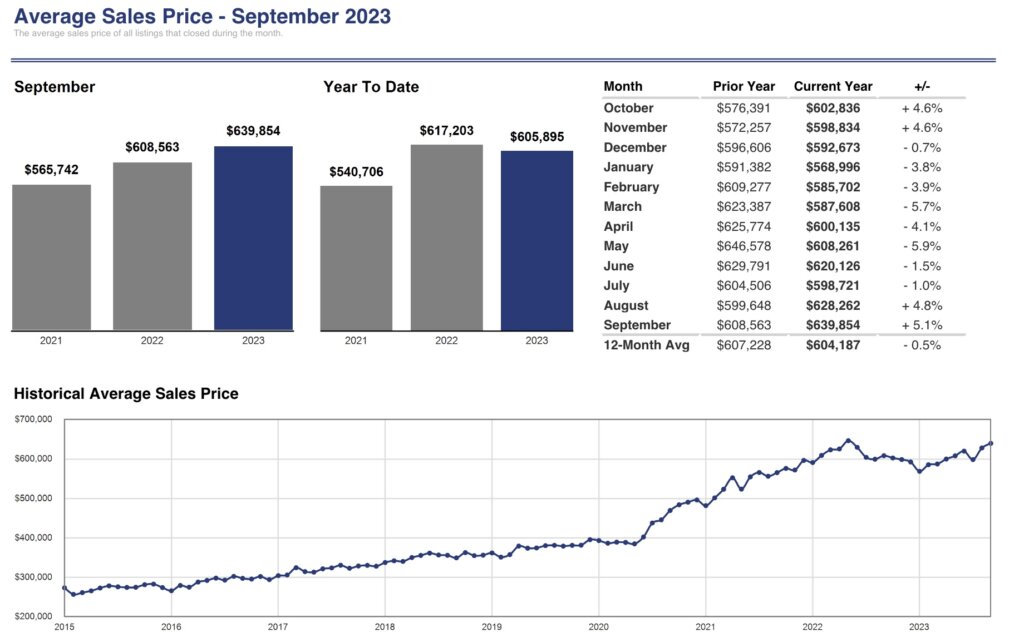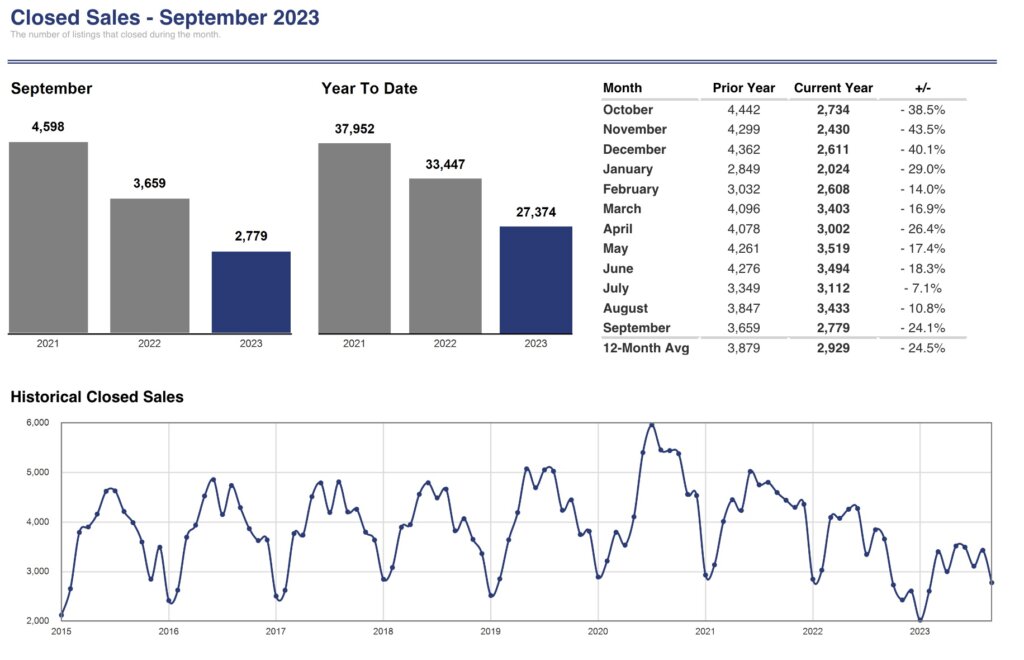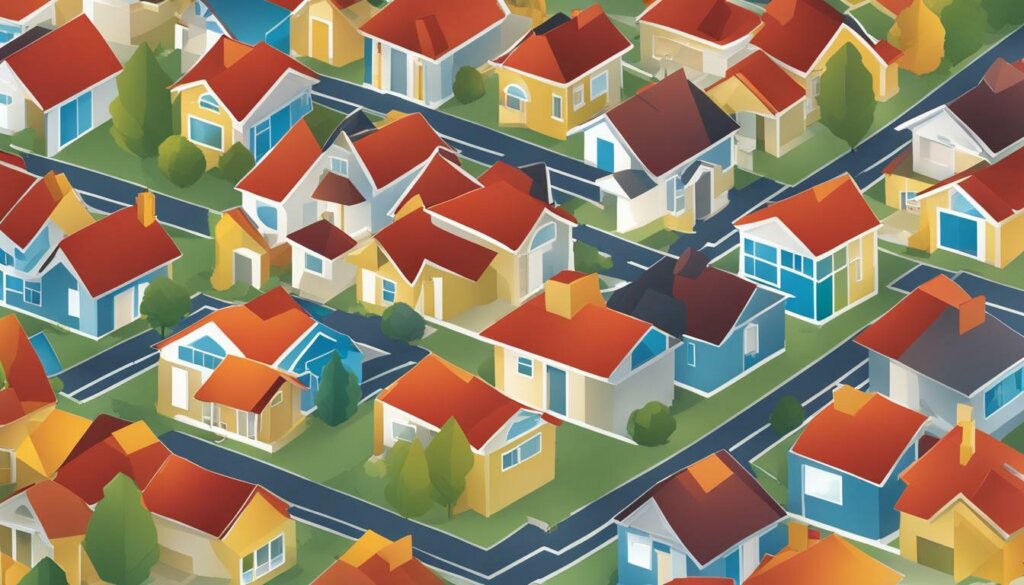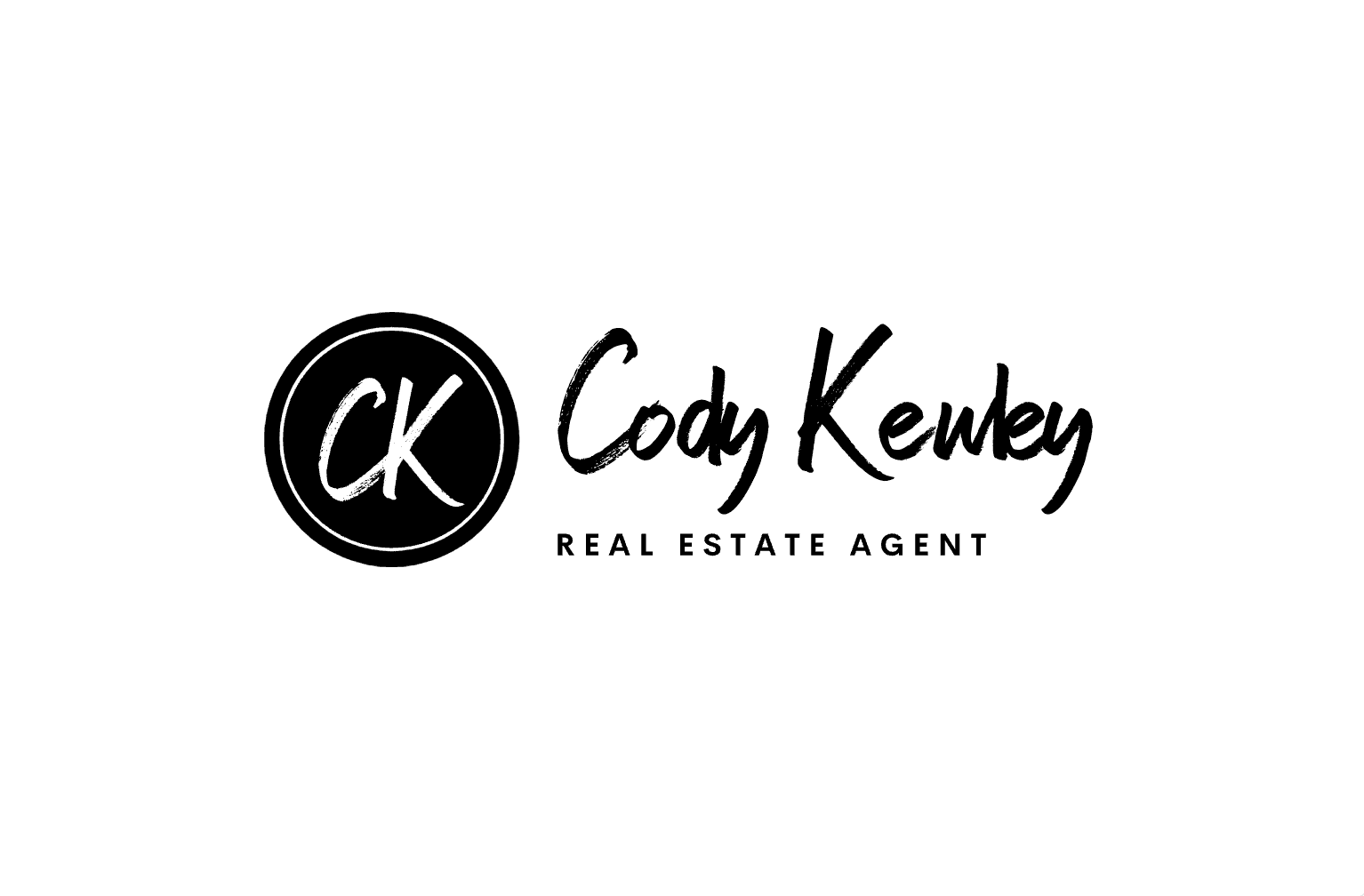Is Utah In A Housing Bubble? Unraveling the Mystery.
If you’re considering buying or selling a home in Utah, you may be wondering if the state is currently experiencing a housing bubble. With rapidly rising home prices, it’s a valid concern. In this article, we will explore the current state of Utah’s real estate market and provide a comprehensive analysis of the factors at play.
First, we will provide an overview of the Utah real estate market and recent trends. Then, we will examine key indicators used by experts to determine whether a housing market is in a bubble. Next, we will analyze Utah’s housing prices and forecast the future outlook for the market.
We will also assess the potential risks and vulnerabilities that could contribute to a housing bubble in Utah. Ultimately, we aim to provide you with the insights you need to make informed decisions in the Utah real estate market.

- Utah’s housing market has seen rapid price growth in recent years.
- Experts use various indicators to determine whether a housing market is in a bubble.
- Factors such as population growth, job opportunities, and supply and demand dynamics influence housing prices in Utah.
- The future outlook for Utah’s housing market is dependent on economic factors and market trends.
- Potential risks and vulnerabilities in Utah’s housing market include speculative buying, excessive lending, and market dynamics.
Understanding the Utah Real Estate Market
If you’re considering buying or selling a home in Utah, it’s essential to understand the current state of the real estate market. Utah is one of the fastest-growing states in the U.S., and the housing market has been on an upward trend for several years. According to recent data, Utah is experiencing a seller’s market however, we are in a slow period due to high-interest rates and lack of inventory in Utah.
The average home sales price in Utah throughout September 2023 $639,000. Compared to last years average sales price which was $608,000 we can see that the average sold prices have increased by 5.1%.

Real estate trends in Utah show that home sales have been decreasing steadily, with a 24.1% decrease in closed sales in Q3 of 2023 compared to the same period in 2022. This trend can be attributed to the increase of higher interest rates pushing past 7-8% and the low housing inventory.

Factors Driving Housing Prices in Utah
Several factors are driving the increase in Utah’s housing prices. One of the most significant factors is the state’s population growth, which has been among the highest in the country for several years. This population growth has created a high demand for housing, resulting in a shortage of available homes for sale.
Another factor contributing to rising housing prices is the state’s strong economy. Utah has a low unemployment rate and continues to attract new businesses, which in turn creates job opportunities and attracts more people to the state.
Finally, Utah has relatively low property taxes compared to other states, which makes it an attractive location for buyers looking to invest in real estate.

“Utah’s real estate market has been on an upward trend for several years, driven by the state’s strong economy, population growth, and high demand for housing.”
Examining Housing Market Indicators
When assessing the potential for a housing bubble, experts look at a variety of indicators that can signal market instability. By analyzing these key metrics, we can gain a better understanding of the current state of the housing market and identify potential areas of concern. Here are some of the housing bubble indicators that we’ll be exploring:
- Price-to-income ratios
- Price-to-rent ratios
- Housing affordability
Each of these indicators provides valuable insight into the housing market, and when considered together, they can help to paint a more comprehensive picture of the market’s health.
Price-to-Income Ratios
The price-to-income ratio is a measure of housing affordability that compares the median home price in a given area to the median household income. A high price-to-income ratio can indicate that housing prices are inflated relative to income levels, which may suggest that the market is overvalued and at risk of a correction.
In Utah, in 2022, the median household income amounted to 95,800. While in 2022, the median home price was 550,000. The Price-to-income ratio has increased steadily over the past several years, from 3.4 in 2020 to 5.74 in 2023. While this is above the national average, it also suggests that housing prices are becoming less affordable for Utah residents.
Price-to-Rent Ratios
The price-to-rent ratio compares the median home price in a given area to the median annual rent. A high price-to-rent ratio can indicate that homes are overvalued relative to rental rates, and may be a sign of an overheated market.
| Median House Price: | 550,000 |
| Median Annual Rent: | 21,900 |
| Price To Rent Ratio | 25% |
In Utah, the price-to-rent ratio has also been on the rise, increasing from 16.9 in 2017 to 19.5 in 2020 and now to 25% in 2023! This suggests that housing prices are outpacing rental rates, which could make it more difficult for residents to afford buying a home in the state.
Housing Affordability
Housing affordability measures the percentage of household income that is required to make monthly mortgage payments on a median-priced home. A high housing affordability index indicates that homes are becoming more affordable, while a low index suggests that households are spending a larger percentage of their income on housing.
In Utah, housing affordability has been declining steadily over the past few years, with the index dropping from 119.6 in 2021 to 82.5 in 2022. This decrease suggests that homes in Utah are becoming less affordable for the average household.
To interpret the indices, a value of 100 means that a family with the median income has exactly enough income to qualify for a mortgage on a median-priced home. An index above 100 signifies that family earning the median income has more than enough income to qualify for a mortgage loan on a median-priced home, assuming a 20 percent down payment. For example, a composite HAI of 120.0 means a family earning the median family income has 120% of the income necessary to qualify for a conventional loan covering 80 percent of a median-priced existing single-family home. An increase in the HAI, then, shows that this family is more able to afford the median priced home.
– National Board of Realtors

“While these indicators are not foolproof, they can provide valuable insights into the health of the housing market. By taking a closer look at these metrics, we can better understand the potential risks and vulnerabilities that could contribute to a housing bubble.”
Analyzing Utah’s Housing Prices
Utah’s housing prices have been consistently on the rise in recent years, with the median home price reaching $550,000 in 2022, a -0.9% increase from the previous year.
This decrease can be attributed to a variety of factors, including the state’s population growth, high-interest rates coupled with high housing prices. Additionally, Utah is experiencing a shortage of available homes for sale, which is contributing to the rise in housing prices.
While the surge in housing prices has made Utah’s real estate market challenging for some buyers, the state remains relatively affordable compared to other hot housing markets such as California and New York. According to a recent study, the average household income in Utah is sufficient to afford a median-priced home in the state.
| Housing Affordability in Ut | 2022 | 2021 |
|---|---|---|
| Median Home Price | $550,000 | $555,000 |
| Median Household Income | $95,800 | $94,510 |
| Household Income Required to Buy Median-Priced Home | ~$119,190 | ~$120,544 |
| Affordability Index | 80.4% | 78.4% |
As illustrated in the table above, the affordability index in Utah has increased from 78.4% in 2021 to 80.4% in 2022. This increase is due to the slight decrease in median home prices.
Experts predict that Utah’s housing prices will continue to rise in the near future due to a combination of factors such as population growth and a lack of available housing. However, the state’s strong economy and relative affordability make it an attractive place to live and purchase real estate.

Experts predict that the Utah housing market will continue to experience steady growth over the next few years. The state’s solid economy, low unemployment rate, and attractive quality of life are expected to remain key drivers of housing demand in the years ahead.
In addition, Utah’s real estate market is likely to benefit from continued population growth. The state has consistently ranked among the fastest-growing states in the country, with a 20.3% population increase since 2010. This influx of residents has driven up demand for housing, particularly in urban areas like Salt Lake City and Provo.
However, it’s worth noting that rising prices and low inventory levels could potentially limit the market’s growth in the coming years. As we discussed earlier, Utah’s housing affordability index has increased in recent years, raising concerns about the potential for a housing bubble.
Overall, the Utah housing market is poised for continued growth, although potential risks and vulnerabilities should be closely monitored to ensure that the market remains stable and healthy.

After analyzing the Utah housing market, we must consider potential risks and vulnerabilities that could contribute to a housing bubble. While the state’s housing market has been strong in recent years, there are still factors that could indicate a future downturn.
One of the primary concerns is speculative buying, which occurs when investors purchase properties with the expectation of their value increasing, rather than based on the property’s intrinsic value. This type of behavior can drive up housing prices beyond sustainable levels, creating a bubble that eventually bursts. In Utah, there has been an influx of out-of-state buyers and investors, which could increase the risk of speculative buying.
Another risk factor is the amount of lending in the market. If lenders extend too much credit to homebuyers, it can create a scenario where households have excessive debt burdens, which can lead to defaults and foreclosures. Utah has seen growth in non-traditional lending, which offers debt-to-income ratios higher than the typical 43% limit set by government-sponsored organizations like Fannie Mae and Freddie Mac. This can make it easier for borrowers to qualify for higher mortgages than they can afford and increase the risk of defaults.
Additionally, the supply and demand dynamics of Utah’s housing market can contribute to the risk of a housing bubble. As population growth drives up demand for housing, builders may not be able to keep up with demand, leading to a shortage of affordable housing. This can create a situation where home prices continue to rise beyond what is reasonable, leading to a potential housing bubble.
Overall, while there are risks in the Utah housing market that could contribute to a housing bubble, there are also factors indicating that the market may remain strong. Ultimately, it’s up to buyers, sellers, and real estate professionals to stay informed and make informed decisions based on the current state of the market.

If you’re looking to buy or sell a home in Utah, a licensed real estate agent like Cody Kewley can be an invaluable resource. With years of experience in the Utah real estate market, Cody has the knowledge and expertise to help you navigate the buying or selling process with ease.
Whether you’re a first-time homebuyer or an experienced real estate investor, Cody can provide personalized assistance to help you achieve your goals. As a skilled negotiator, he can help you get the best possible price for your home or find the perfect property that fits your budget and needs.
Cody has a deep understanding of the local community and real estate market. He can provide valuable insights into the latest real estate trends and market conditions, helping you make informed decisions about buying or selling your home.
If you’re looking to sell your home, Cody offers a comprehensive marketing strategy designed to maximize exposure and attract qualified buyers. From professional photography to strategic online advertising, he can help ensure your home stands out in a crowded market.
If you’re looking to buy a home in Utah, Cody can provide guidance and support throughout the entire process. From finding the right neighborhoods to exploring different financing options, he can help make the homebuying process as stress-free as possible.
So if you’re ready to buy or sell a home in Utah, consider working with Cody Kewley. With his expertise, knowledge, and dedication to his clients, you’ll be in good hands.

As we’ve seen throughout our analysis, the Utah housing market is a complex and dynamic one, with many factors influencing its trajectory. To gain further insights into this market, we reached out to industry experts and real estate professionals with experience in the Utah housing market. Here’s what they had to say:
“Despite some fluctuations in recent years, the Utah housing market has remained strong overall, with steady demand and limited supply driving up prices in many areas. However, it’s important for buyers and sellers to make informed decisions and work with experienced real estate agents who can navigate the nuances of this market.”
– Jack Nicholes, Utah Real Estate Agent
“Utah’s population growth and robust economy have been key drivers of its real estate market, fueling demand for housing and driving up prices in many areas. However, the risk of a housing bubble is always present, and it’s important for buyers and sellers to stay vigilant and keep an eye on market trends.”
– Jimmy Cervantes, Utah Real Estate Analyst
These expert insights highlight the importance of working with experienced professionals and staying informed about market trends and risks. By doing so, buyers and sellers can make informed decisions in Utah’s dynamic housing market.

After a thorough analysis of the Utah real estate market, it seems that the state may not be in a housing bubble. Factors such as population growth, job opportunities, and demand dynamics are currently driving housing prices, but there are no significant signs of excessive speculation or lending that could lead to a bubble.
However, it is important to note that the housing market can be unpredictable, and unforeseen events can lead to a shift in trends. Therefore, it is always vital to conduct proper market research and seek the guidance of experienced professionals before making any real estate decisions.
Key Takeaways
Before making any decisions in the Utah housing market, consider the following takeaways:
- Utah does not appear to be in a housing bubble currently, but the market can be unpredictable.
- Factors such as population growth, job opportunities, and demand dynamics are currently driving housing prices in the state.
- Market research and guidance from professionals, such as a licensed real estate agent like Cody Kewley, can help you make informed decisions.
Overall, while the Utah housing market may present some challenges, it also offers exciting opportunities for buyers and sellers. By staying informed and seeking the right guidance, you can achieve success in this dynamic market.
FAQ
Is Utah in a housing bubble?
While the Utah housing market has experienced significant growth in recent years, experts do not currently believe that the state is in a housing bubble. Factors such as strong population growth, a robust economy, and healthy demand for housing contribute to the overall stability of the market.
What are the real estate trends in Utah?
Utah’s real estate market has been characterized by rising prices, low inventory levels, and high demand. The state has seen consistent population growth and favorable economic conditions, which have contributed to a competitive housing market and increasing property values.
How do experts analyze the housing market for signs of a bubble?
Experts analyze various indicators, such as price-to-income ratios, price-to-rent ratios, and housing affordability, to assess the potential for a housing bubble. By evaluating these metrics, experts can determine if housing prices have outpaced fundamental factors like income and rental rates.
What factors influence housing prices in Utah?
Housing prices in Utah are influenced by factors such as population growth, job opportunities, supply and demand dynamics, and interest rates. Additionally, local market conditions and economic trends can impact housing prices in specific areas of the state.
What is the forecast for the Utah housing market?
The forecast for the Utah housing market remains positive, with experts predicting continued growth and strong demand. However, it’s important to monitor factors like interest rates, economic conditions, and market dynamics as they can impact the future trajectory of the market.
What are the risks of a housing bubble in Utah?
While experts do not currently see a housing bubble in Utah, potential risks include speculative buying, excessive lending practices, and disruptions in the local economy. Monitoring these factors is essential to ensure the market remains stable and sustainable.
How can Cody Kewley Real Estate Agent assist me?
Cody Kewley, a licensed real estate agent in Utah, can provide personalized assistance whether you’re looking to sell your house or buy a new home. With his expertise in the Utah housing market, Cody can guide you through the process and help you make informed decisions.
What insights do industry experts offer about the Utah housing market?
Industry experts provide valuable insights into the current state of the Utah housing market, including potential risks, trends, and tips for buyers and sellers. Their expertise can help individuals navigate the market with confidence and make informed decisions.
What are the key takeaways from the analysis of Utah’s housing market?
The analysis indicates that Utah’s housing market is currently stable, experiencing growth, and not in a housing bubble. However, it’s important to consider factors like market conditions, demand, and affordability when making decisions related to buying or selling real estate in Utah.
